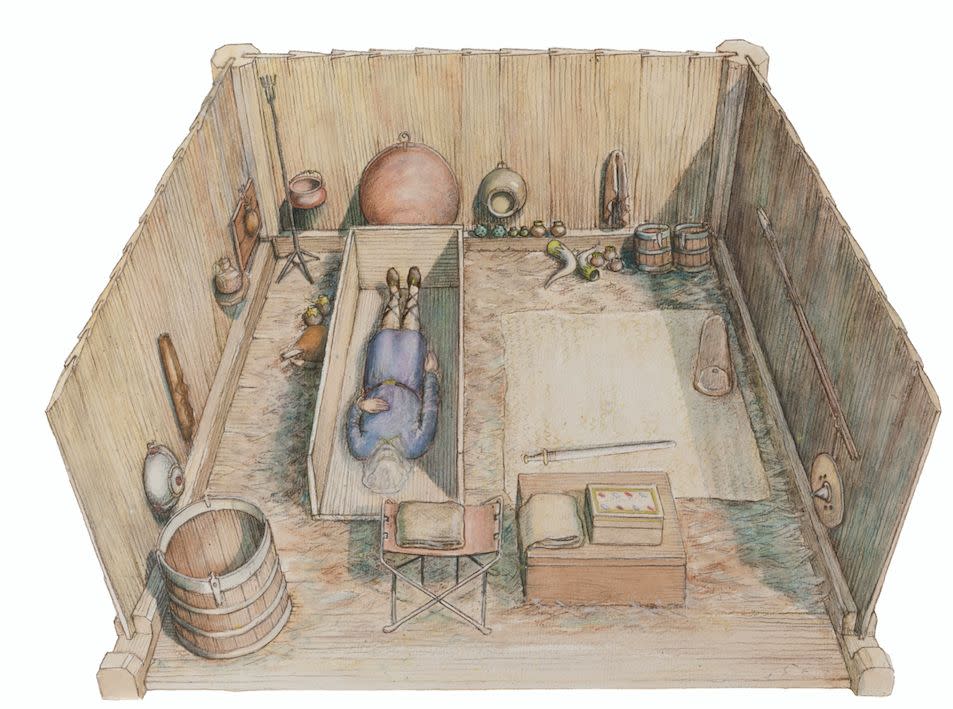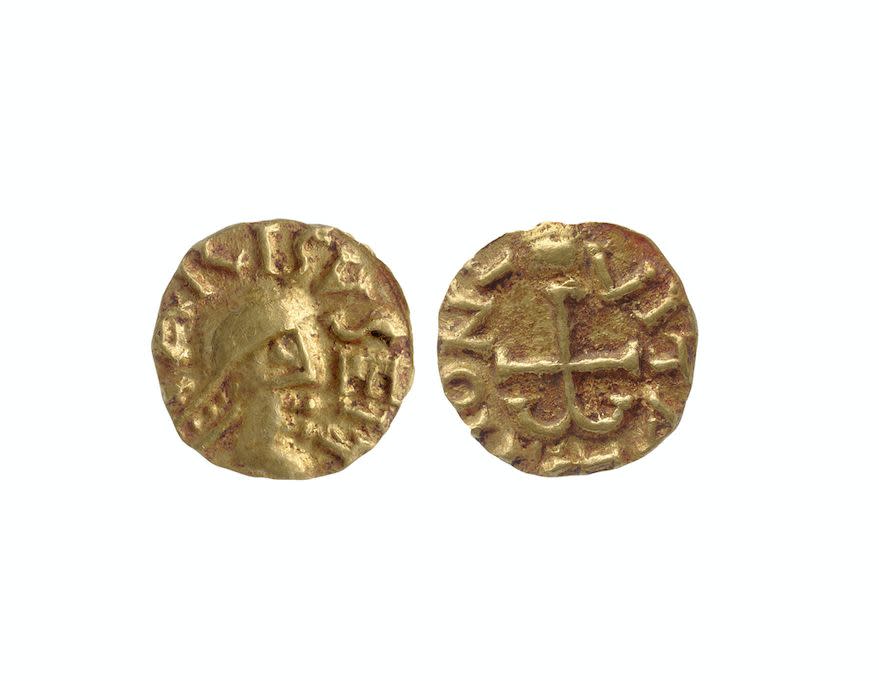‘UK’s version of Tutankhamun' discovered during roadworks next to Aldi in Essex

An ancient burial site discovered between a pub and Aldi supermarket in Essex has been described as the UK’s "equivalent of Tutankhamun's tomb”.
The tomb was found during work on a section of road in Prittlewell, Southend-on-Sea, in 2003, and analysed artefacts suggest the body found there may be that of Seaxa, brother of Anglo-Saxon King Saebert.
Sophie Jackson, director of research and engagement for Mola (Museum of London Archaeology), said it is the earliest dated Christian Anglo-Saxon princely burial in the country.


Archaeologists have estimated it would have taken 113 working days to build the chamber, which contained exotic artefacts from around the world.
Ms Jackson said: ”I think it's our equivalent of Tutankhamun's tomb.
“It's getting an intact version of this and seeing how everything is positioned and what he's got with him.”
Read more from Yahoo News UK:
Researchers find ‘Holy Grail’ of fully recyclable plastic
Theresa May could offer MPs another Brexit vote before EU elections
Nigel Farage insists Euro elections will ‘change everything’
She said the site had been fully excavated because, once discovered, it was vulnerable to potential theft.
Artefacts uncovered include a lyre (a stringed musical instrument), a 1,400-year-old painted wooden box, and a flagon believed to be from Syria.
It is the first time a lyre has been recorded in complete form, and the box is the only surviving example of painted Anglo-Saxon woodwork in Britain.

Other finds included the gilded silver neck of a wooden drinking vessel used for wine, and decorative glass beakers.
"I think the thing that's so strange about it is that it was such an unpromising looking site," said Ms Jackson. "It's between a bit of railway and a bit of road, essentially a verge.
"It's not where you'd expect to find it.”

Carbon dating indicated that the male died between 575AD and 605AD, so could not have been King Saebert, who died in 616AD.
Fragments of adult tooth enamel suggest he was over the age of six, and the size of the coffin and placement of items within suggest he was about 5ft 8in.
Ms Jackson said it was possible it was the king's brother, Seaxa, adding: "That may also not be correct, but that's the best guess.”
"There's a lot of debate about whether he was a fully-fledged hairy beast Saxon warrior, or younger," she said. "Had he died before he could really prove himself as he could have been buried with more kit?”

The presence of artefacts from other kingdoms suggest wealth, she said.
The chamber, which was about 13ft (4m) by 13ft (4m) and around 5ft (1.5m) deep, contained some 40 artefacts.
Some of them will be displayed at an exhibition at Central Museum in Southend which opens to the public on May 11, and research will also be published in two books.
The project was funded by Southend-on-Sea Borough Council and Historic England.

 Yahoo News
Yahoo News 
